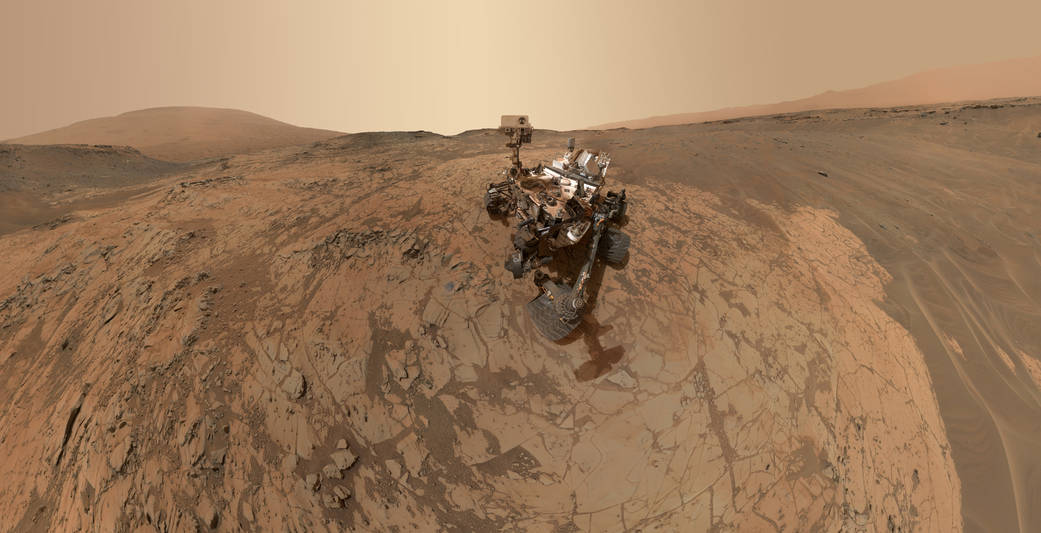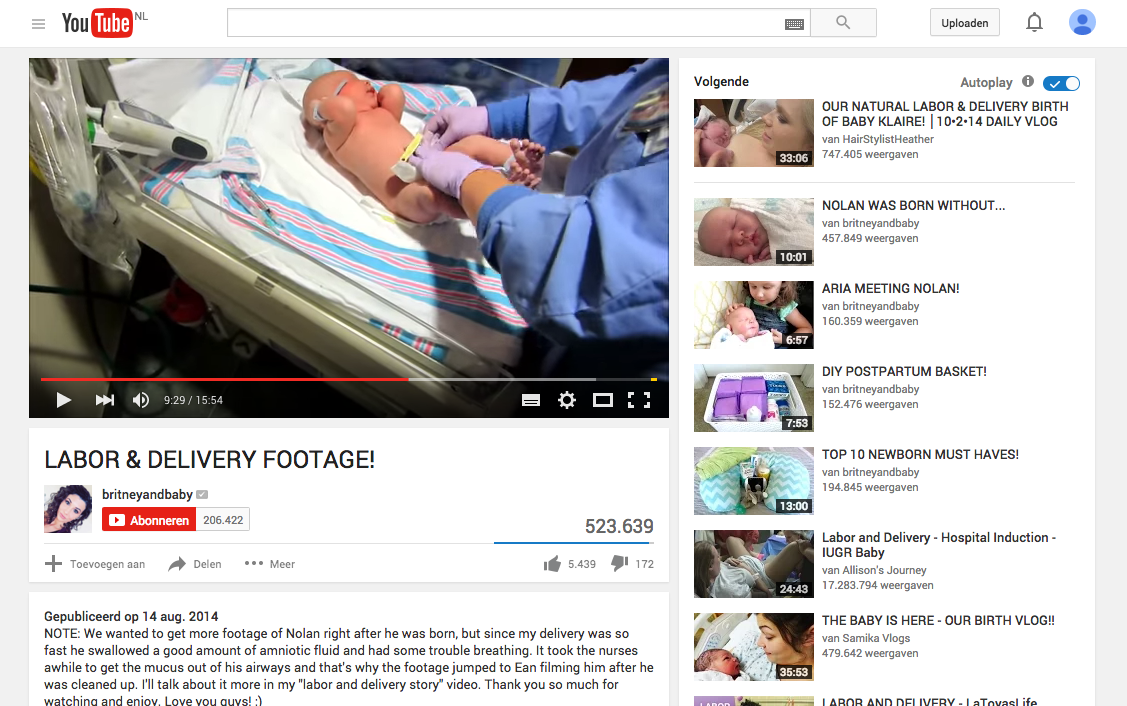Post Digital Cultures 3: Thinking the Relationship between Art and new media (and the World)
4 – 5 December 2015, Lausanne – organized by the Federal Office of Culture (FOC) and Les Urbaines festival
“It’s more fun to build things on the internet because your sketchbook is suddenly a city.” – Andreas Angelidakis
The city is a sketchbook, a robot is taking a selfie on Mars, photoshopped buildings are popping up in real life. In today’s post digital culture all our actions are influenced by digital technologies, the analogue and digital are fused, and we cannot imagine life without digital technologies. The third and final edition of the Post Digital Cultures symposium in Lausanne was all about the ubiquitousness of digital technologies and how this has changed artistic production, and led to alternative ways in publishing and education. It gathered artists, curators and researchers who discussed the current state of contemporary cultural production, which resulted in some interesting presentations and case studies. The two-day symposium was divided in three parts concerning digital technologies and art in relation to technologic autonomy, literature, and education. I will report on the talks and projects that caught my attention the most. The complete programme can be found here, and all recordings of the presentations can be found on YouTube.
Looking at the Autonomy of Technologic Objects, Systems and Data
The first session was about the degree of autonomy of digital technologies that have become extensions of our identities and bodies. Do we conceive digital technologies after our needs or vice versa? Andreas Angelidakis kicked off with his presentation called ‘Abbreviation’. Angelidakis is trained as an architect and maintains an artistic practice that switches between architecture, curating, writing, speculative design, research, and the internet. He took the audience into his world of experiments, early in the virtual world Second Life, where the rules of the real world don’t count and he could build whatever he wanted. Angelidakis showed a screen capture of his avatar in a place called sandbox in Second Life 2007. The added subtitles clarify his experiences and fascination: “I always thought that building on the internet was like building in real life but the truth is that on the internet there is no weather, there is no gravity, buildings can fly and you are never cold. What internet buildings cannot do is grow old.”
With Second Life Angelidakis has found an abbreviated, faster way to create buildings, and become an architect – compared to offline life. These digital experiments have been a great inspiration for his multidisciplinary practice that often focuses on the internet, and the perceptive and behavioural changes it has brought about.

1 click Architecture by Andreas Angelidakis for the Mavala competition. Image: http://andreasangelidakis.tumblr.com/post/9372894394/1-click-architecture
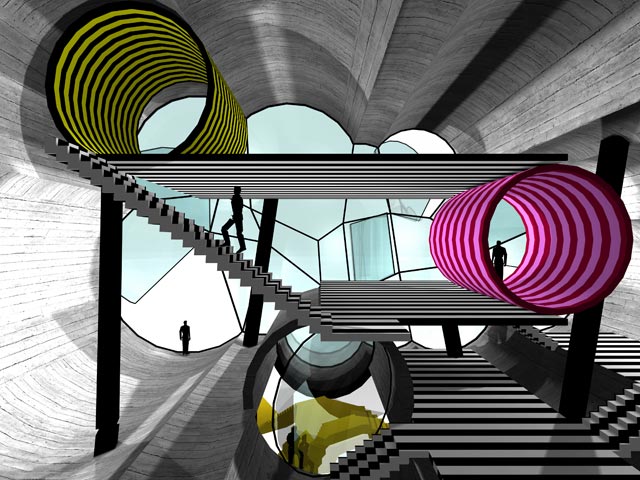
Cloud house by Andreas Angelidakis, a proposal for a vacation home. Images: http://www.angelidakis.com/_PAGES/CloudHouse.htm
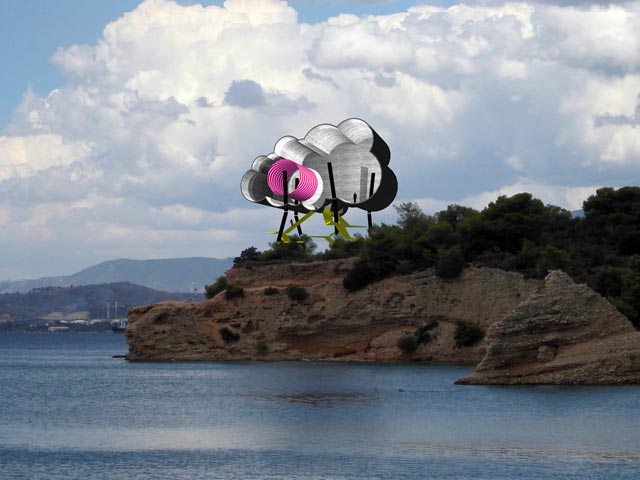
While Angelidakis has spent a lot of his time in Second Life, artist Katja Novitskova definitely spends a lot of time watching videos on YouTube. She started her talk, called ‘New Horizons’ – a reference to NASA’s mission to Pluto – with an edited YouTube video in which a robot is exploring life underwater. While she was watching the original video on YouTube, trippy music was playing on SoundCloud. She added this music to the original video, which resulted in this surreal video edit.
Novitskova dived into these videos on YouTube because of her research into hydrothermal vents in the deep sea floor of the Arctic Oceans and the economies around them. These hydrothermal vents are home to enzymes that have the potential to be used as ecologically friendly and effective catalysts for large-scale industrial processes (food production, waste handling, biofuels). Because of this potential, companies are increasing competition for licenses to mine the areas around the vents. This new frontier has set in motion a lot of robotic missions to the floors of the ocean. As a result, tons of video footage is being produced of this previously unknown and unconquered landscape. Novitskova is fascinated with the level of mediation in our lives. From family vloggers that stream videos of their new borns straight to YouTube, to planetary researchers that have become pixel pushers instead of field geologists, life is being fictionalised at the very moment it is happening. For us it is impossible to imagine places like Mars or the deep sea without a robot or device photobombing the view. This level of mediation in life inspires her artistic practice. The installation Pattern of Activation (Loki’s Castle) draws from the aesthetic of the robotic deep sea missions, and illustrate new forms of seeing due to robotic mediation. But also the baby swing, as seen in one of the vlogs is part of the work.
- Baby Products I Couldn’t Live Without! by britneyandbaby
- Labor & delivery footage’ by britneyandbaby
After the first set of presentations, curator Elise Lammer opened the panel discussion with the suggestion that technology has become more powerful than us, humans, and that we have adapted to technology rather than technology has adapted to us. Although digital technologies obviously play a major role in the artistic practices of both Angelidakis and Novitskova, one of the other panellists, Carson Chan doesn’t agree with the statement. According to him, there is no difference in autonomy between humans and the things we produce, it’s completely fused. As Novitskova has showed us, the distance between science and fiction, between reality and its representation is no longer there.
Poetry, Literature and the Language of internet
In the second session author and curator Harry Burke presented the work of poet Eugen Gomricher. Burke talked about Gomricher’s work from the 1950s in relation to a newer generation of poets that both continue and challenge his work in the post digital moment of today. Julieta Aranda, co-founder of e-flux talked about Supercommunity, a project that took place at the Venice Biennale 2015. E-flux journal has been invited to participate in All The World Futures and created a single issue of the journal spanning four months. Supercommunity released daily writings on an analogue, old-fashioned billboard placed in the Giardini. Aranda said that e-flux journal has become much more academic over time than it was originally supposed to be. Suppercommunity functions as a counter-project because of its content that is created by less known writers, artists, and non-academics, including poetry, short fiction, plays and screenplays as well as other epistolary forms by almost one hundred authors. All texts are archived, you can access them here.
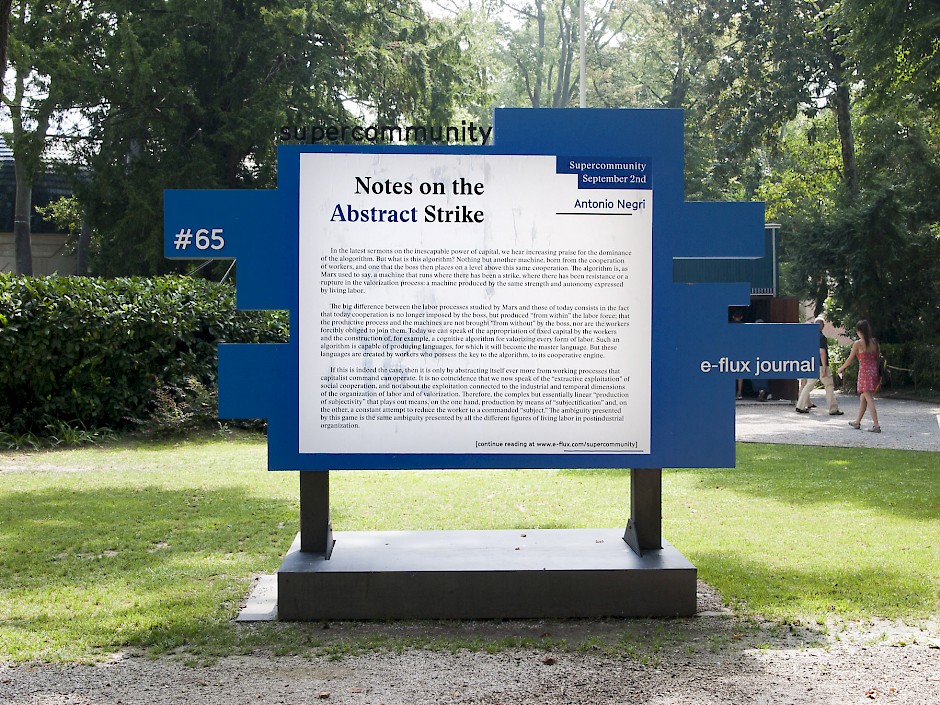
New Forms of Education
The second day of the symposium was dedicated to alternative forms of education. Digital technologies have shaken up the production and sharing of knowledge and the internet has gained a key role in education. Founder of aaaaarg.org and The Public School, Sean Dockray talked about the relationships between institutions and counter-institutions. Both aaaaarg.org and The Public School are examples of counter-institutions. Aaaaarg.org is a platform designed for critical thinking outside the institution; The Public School is an autonomous, self-organized platform for learning that follows an autodidactic approach. The Public School is public from beginning to end. It doesn’t have a curriculum, is not accredited, and does not give out degrees. Sean Dockray is hoping that projects like The Public School can suggest some possible futures for art education.
“… rather than thinking of the counter-institutions as something akin to new buildings, we instead imagine them like scaffolding that attaches onto existing buildings, creating new architectures in-between.”
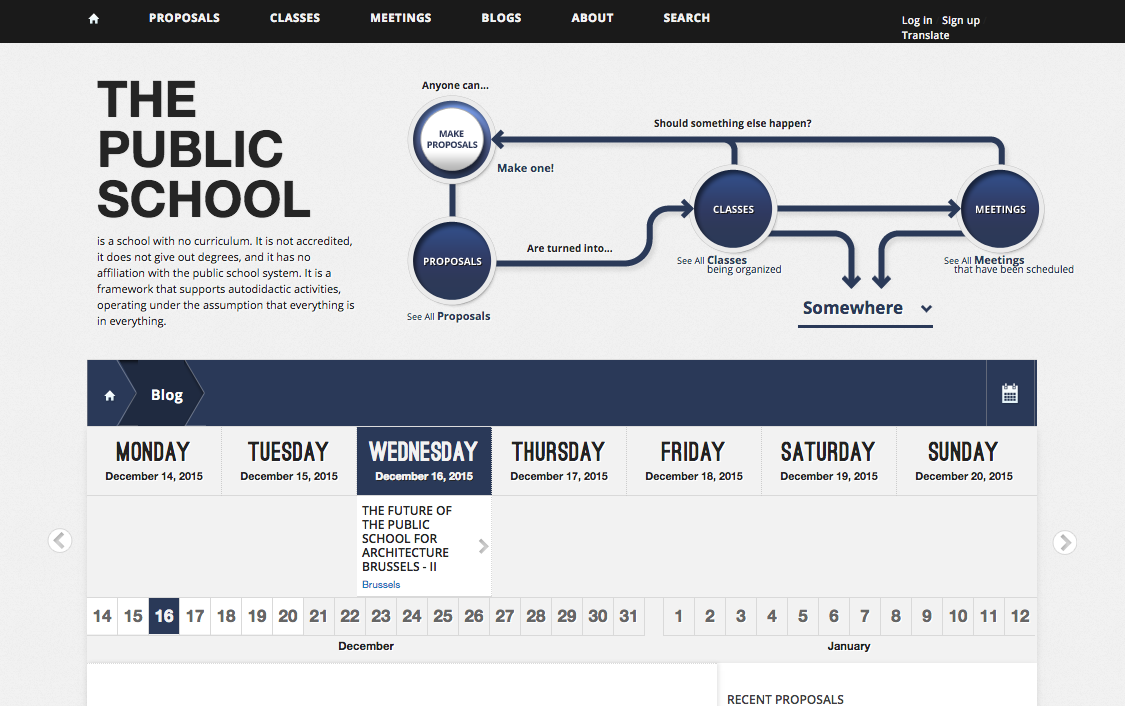
The symposium closed with advise from artist and philosopher Adrian Piper, who read a paper on the definition and possibilities of artistic research. She shed light on today’s blurry notion of artistic research and provides us with her thoughts on how to deconstruct and think critically when building a well-functioning PhD program in fine arts. She discussed two texts, by Hans de Wolf and Carolyn Christov-Bakargiev, in which the term artistic research is being used. In both texts questions are raised as to whether artistic research should lead artists to revise their practice to conform to, or whether artistic research captures a previously unnoticed part of artistic creativity. If artistic research should lead to artists revising their practice, art academies are obligated to incorporate education on the additional skills needed. If artistic research captures a previously unnoticed part of artistic creativity as traditionally understood, there is no general program that can teach ways in which artistic research enters into a particular artists creative process, according to Piper. In this sense, artistic research is a precondition for traditional academic research. The conclusion of her paper is that the distinction between artistic and traditional research is based on misguided assumptions. During the panel discussion, Piper mentions that there is a potential for great synergy between artists and scientists that has not yet been fully explored.
“We are now in 1989 … You can picture the Berlin wall falling, the faith, the freedom, the end of the cold war … thousands of families reunited … and in Switzerland, the World Wide Web is invented at CERN … you may now relax your knee muscles.” – Lauren Huret
After the last talk we all fell asleep during the performance Relaxing Data by artist Lauren Huret. Provided with sleeping masks, Lauren Huret talked the audience into a state of meditation interspersed with the history of the western world since the invention of the internet. Although the awareness of cameras recording the symposium felt a bit uneasy, the performance was very relaxing, and resulted in an utterly awkward video registration on YouTube.



